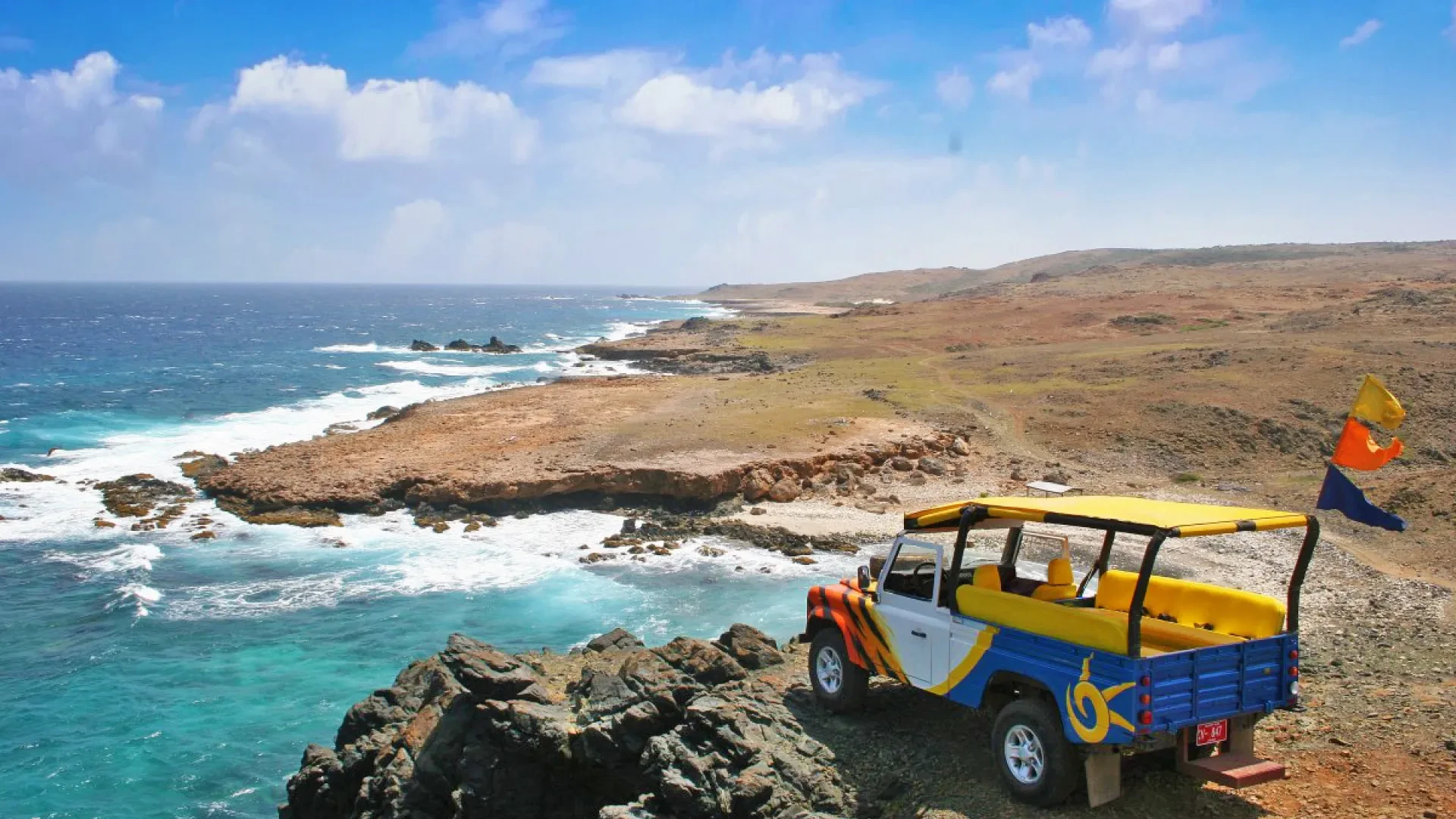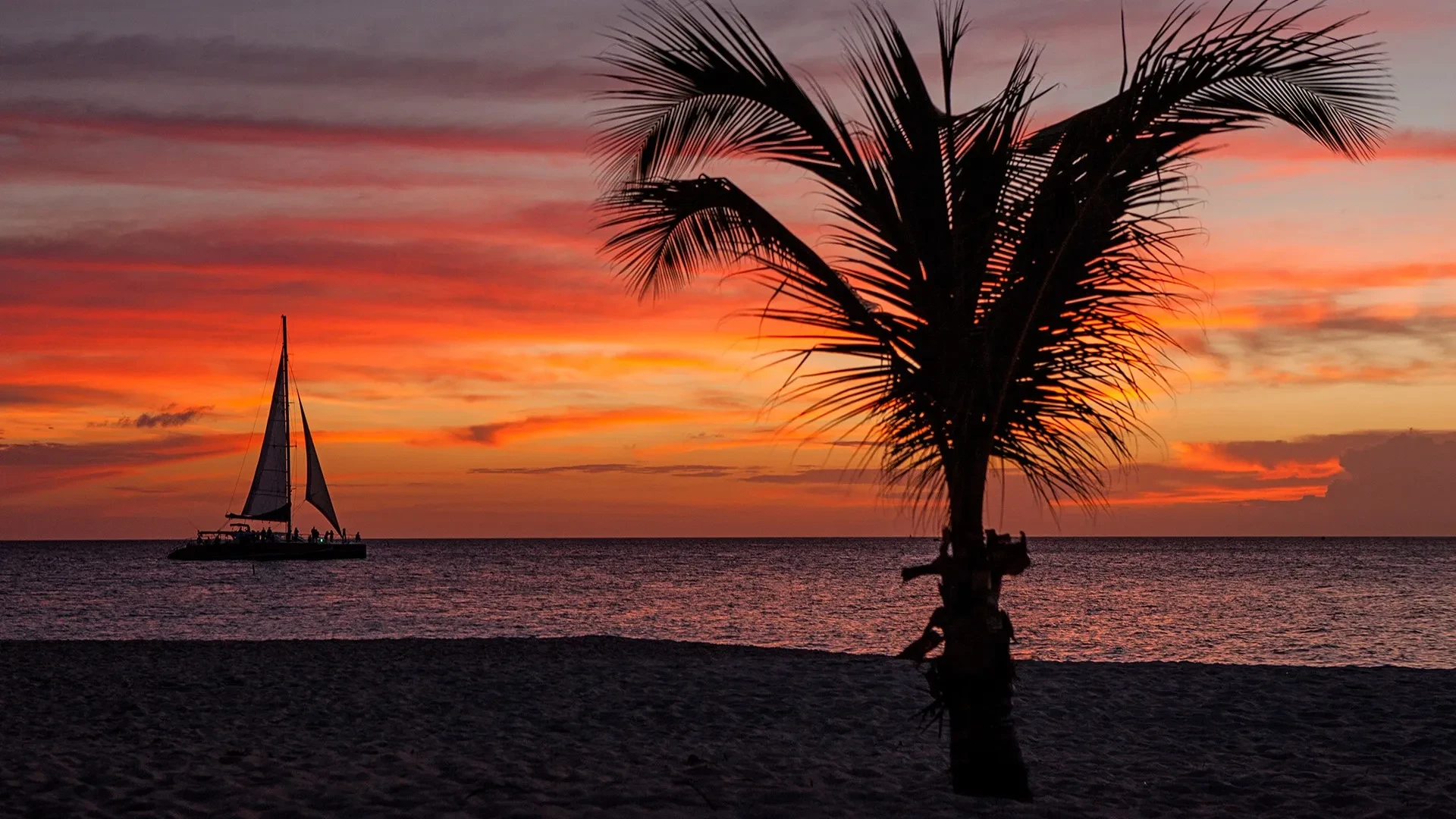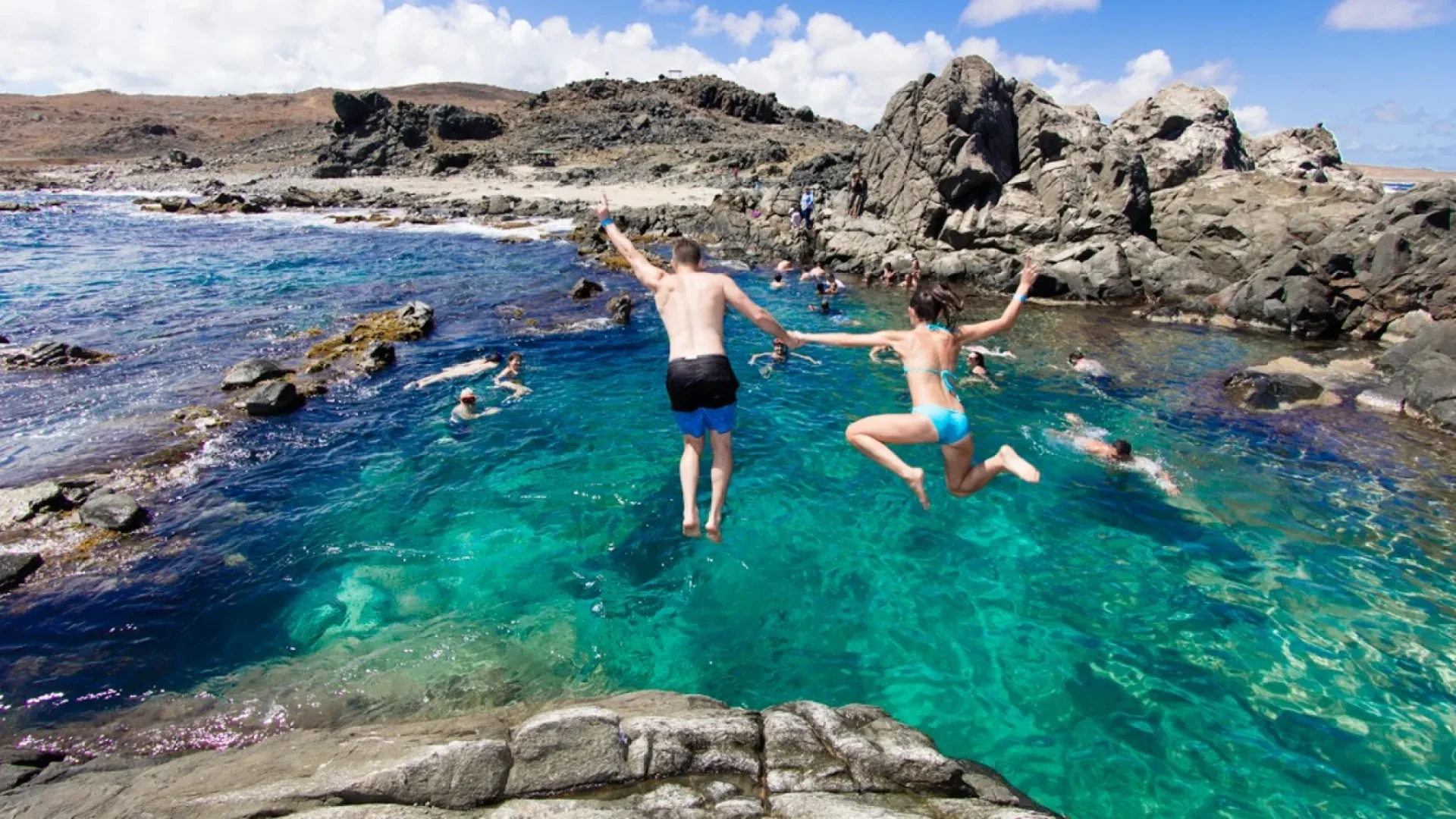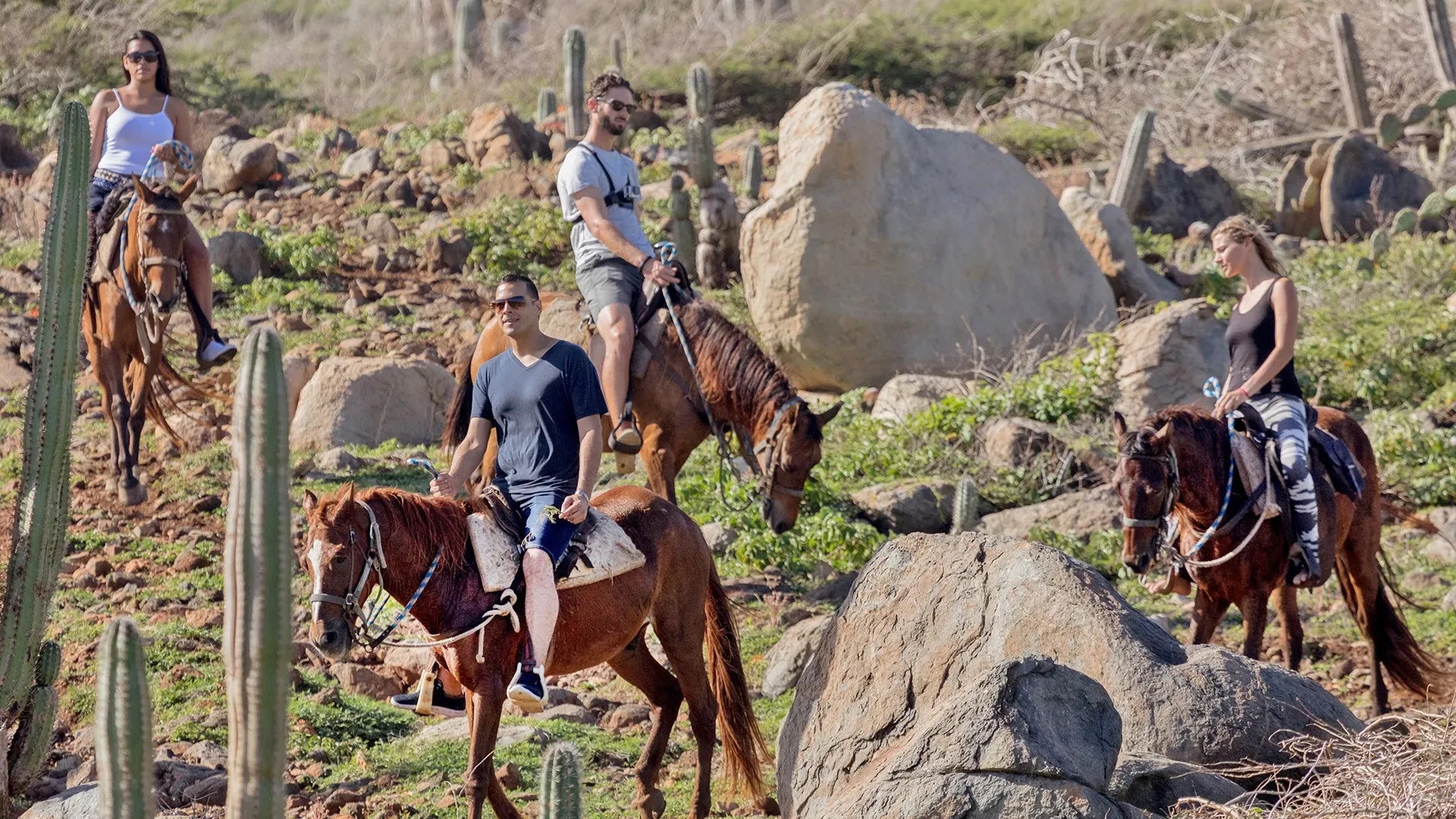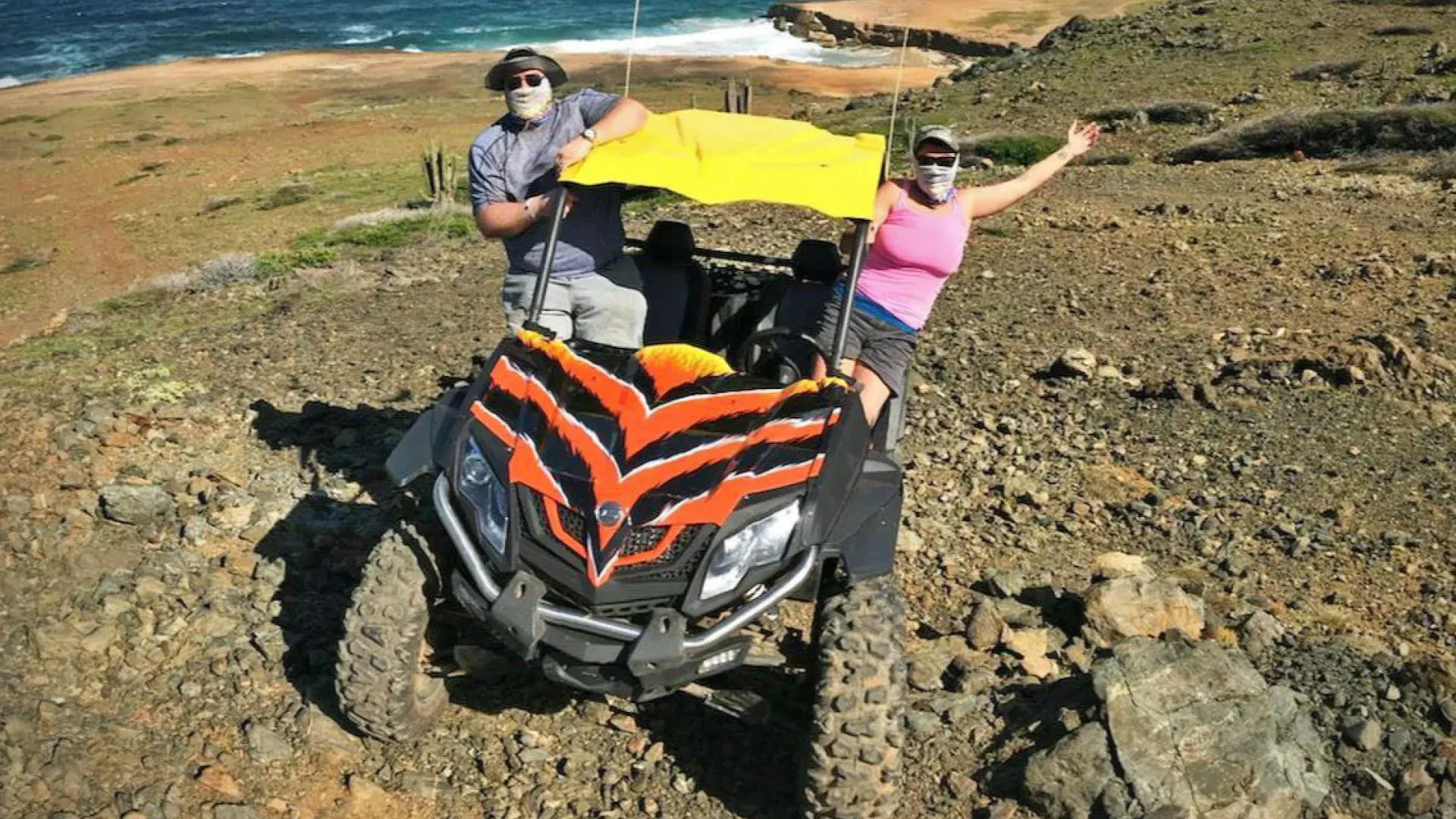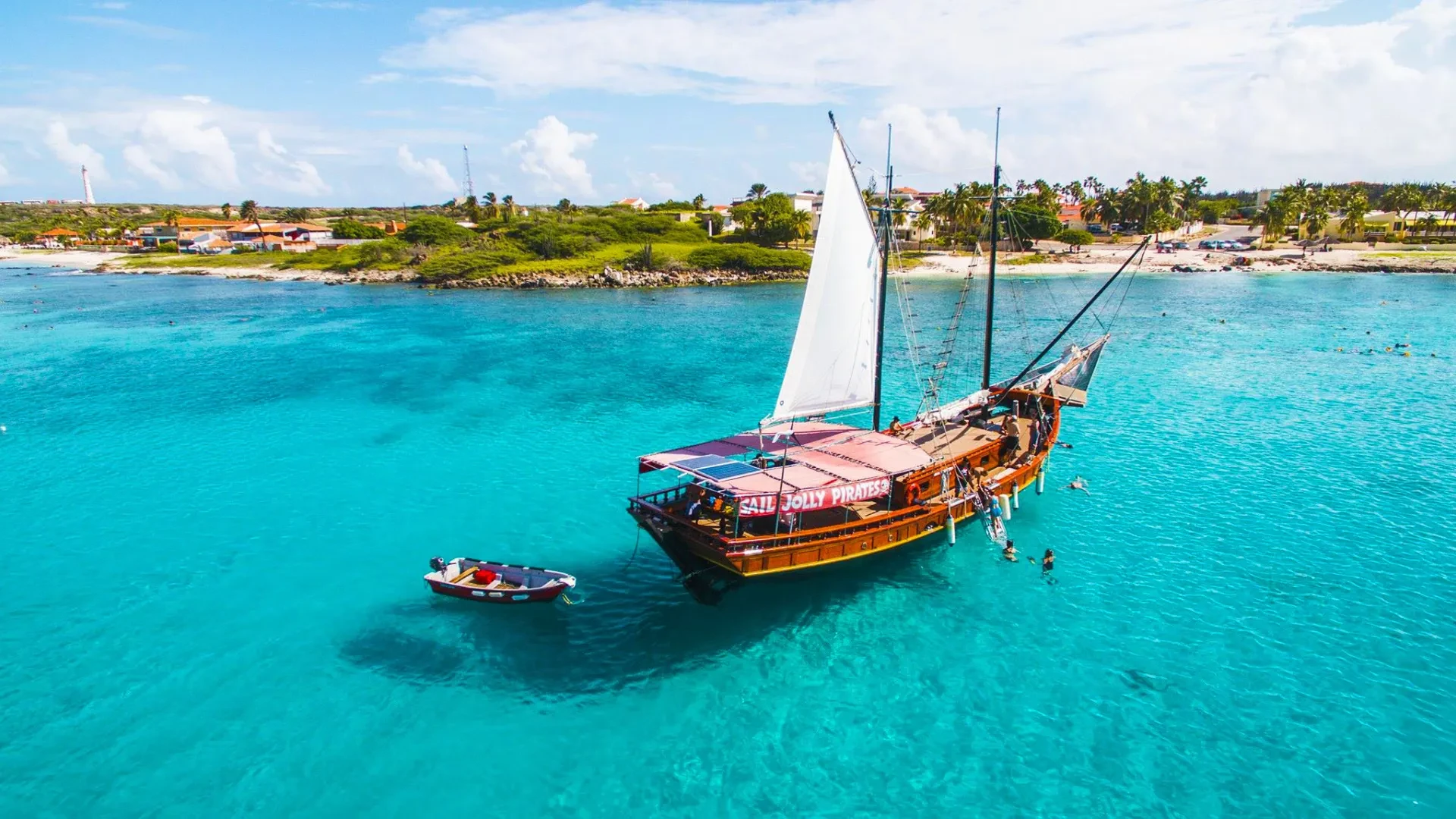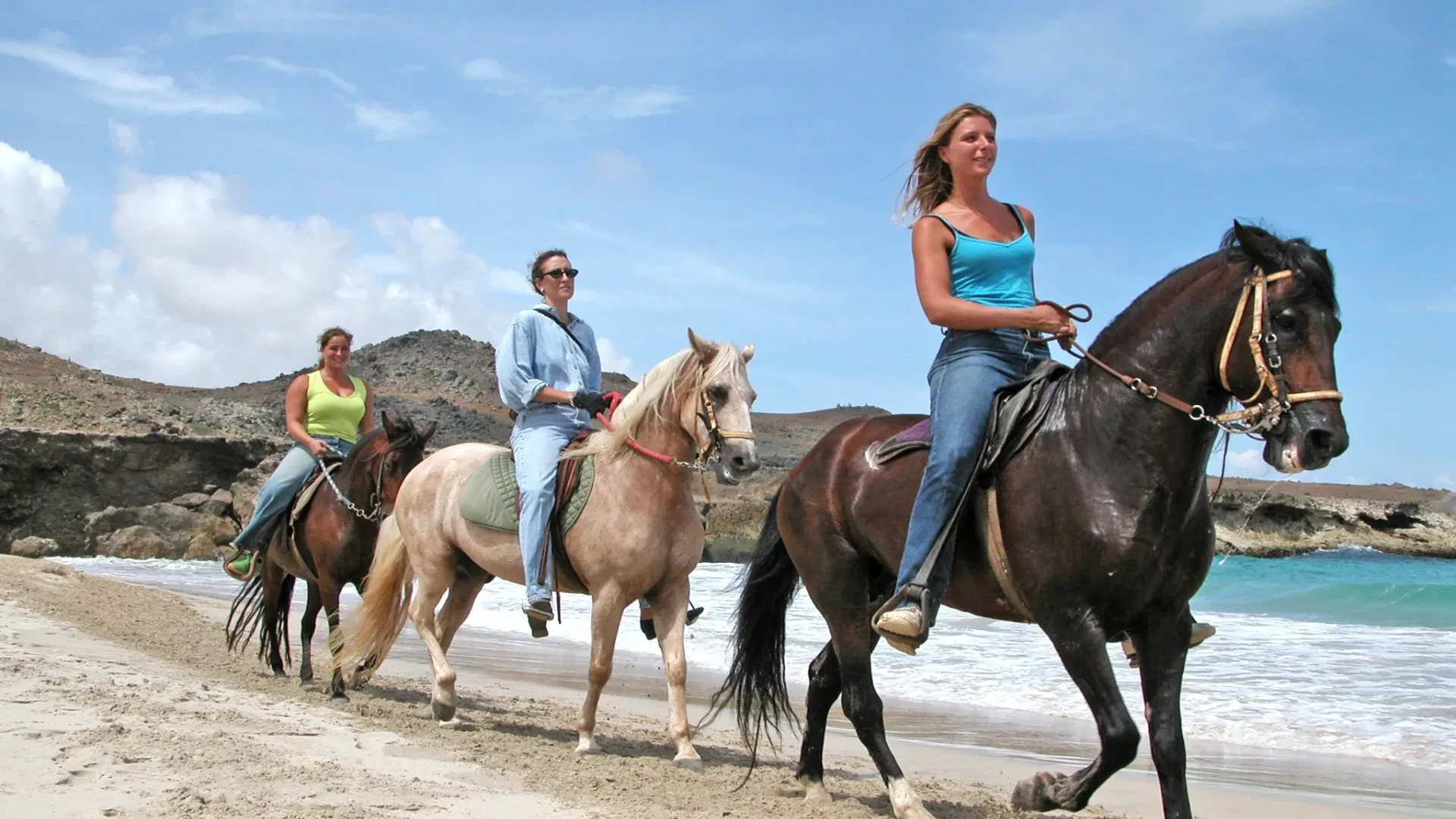Levente
Been there. Done that.
Been there. Done that.
Share

Hyro’s Cove is a small indentation in Aruba’s rugged limestone coast. It’s one of the least significant beaches on the island, with nothing to do and no safe access to the water. Most visitors only pass by if they’re driving the northeast coast by jeep, barely even noticing that there is a beach kind of thing here.
Hyro’s Cove is another of the tiny, forgotten coves scattered along Aruba’s northeast coast. It’s narrow, rocky, and completely undeveloped, with no shade, no shack, and no facilities. The waves hit hard against the shoreline, making it unsafe for swimming or snorkeling. There’s nothing here beyond a sandy strip and the sound of crashing surf, so you shouldn't even bother getting out of the car.
There’s nothing organized to do at Hyro’s Cove. The appeal is simply in its remote and untouched setting, where you can stop briefly to take in the scenery before moving on.
The cove’s rocky edges and constant surf make for dramatic photos. It’s one of those spots that shows Aruba’s wild northeast coast at its most raw and untamed.
Hyro’s Cove is best seen as part of a 4x4 loop that includes other hidden coves, off-road viewpoints, and nearby attractions. On its own, it has little to offer, but combined with other stops it fits into a day of exploring Aruba’s rugged side.
Just down the coast you’ll find the Bushiribana Gold Mill Ruins, one of Aruba’s most popular historic landmarks. The weathered stone ruins overlooking the ocean are a striking reminder of the island’s gold mining days and make a great photo stop.
On the way to Hyro’s Cove you’ll pass the Aruba Ostrich Farm, where you can learn about, feed, and take pictures with these huge birds. It’s a quirky, family-friendly stop that contrasts sharply with the rugged landscape around the coves.
For a more adventurous way to explore Aruba’s northeast coast, The Gold Mine Ranch offers horseback riding tours along beaches, dunes, and rocky trails near the ruins. It’s a unique way to experience both Aruba’s history and its dramatic natural scenery.
Not far from Hyro’s Cove lies the Natural Bridge, once Aruba’s most famous natural landmark. Although the original bridge collapsed in 2005, the remains and the smaller Baby Bridge nearby still attract visitors. It’s one of the key sights to combine with a northeast coast drive.
Snorkeling is not possible at Hyro’s Cove. The cove is far too narrow, the surf is strong, and the rocky bottom makes it unsafe to enter the water. There are no reefs, coral patches, or marine life to see here, and the constant waves make visibility impossible.
If you’re interested in snorkeling in Aruba, head instead to the calm west coast. Malmok Beach, Tres Trapi, and Boca Catalina are among the best snorkeling beaches on the island, with crystal-clear water, shallow reefs, and colorful fish close to shore. These spots are easy to reach, safe to enter, and ideal for families and casual snorkelers alike.
There are no restaurants, bars, or shops at Hyro’s Cove. The area is completely undeveloped, so if you plan to stop here, bring your own food and plenty of water. The only nearby option is a small roadside stand close to the Natural Bridge.
A quirky little stop near the collapsed Natural Bridge, serving cold drinks and simple snacks. It’s the closest place to grab refreshments while exploring Aruba’s northeast coast, though it’s not a full restaurant.
There are no hotels or resorts at Hyro’s Cove itself — the area is far too remote and undeveloped. The closest accommodations are small lodges and apartments located inland around Noord, which serve as a convenient base if you want peace and easy access to both the northeast coast and the island’s main beaches.
A rustic eco-style lodge surrounded by nature, Koeriboeri offers a quiet and secluded stay. It’s a good choice for families or groups looking for space and a retreat away from the busier tourist zones.
This small, modern guesthouse in Noord provides simple yet comfortable apartments with a relaxed atmosphere. Couples especially enjoy the privacy and central location.
A budget-friendly option featuring self-catering apartments, Palm Garden Apartments is ideal for independent travelers who want affordable lodging without sacrificing convenience.
These accommodations make sense if you’re staying in Noord and plan to explore Aruba by car. However, for most visitors, Palm Beach or Eagle Beach offer a wider selection of hotels, restaurants, and activities.
Hyro’s Cove is a tiny, narrow beach on Aruba’s northeast coast, located close to the Natural Bridge and other small coves. The access road is unpaved if you are coming from the Ayo district but relatively easy, so you don’t need a 4x4 if you’re only heading to Hyro’s Cove or the Natural Bridge. A regular rental car can make it if you drive slowly. However, if you want to continue driving along the full northeast coastline, there are rougher sections where a 4x4 is required.
Cruise passengers don’t usually stop at Hyro’s Cove on its own. Most visit the Natural Bridge on a jeep or UTV excursion and walk over to the cove. If you’re going independently, rent a car at the port or take a taxi to the Natural Bridge.
From the airport, head east through Oranjestad and Santa Cruz, then follow signs for the Natural Bridge. The final stretch is a dirt road, but manageable in a regular car if you take it slow.
From the resort strip, drive south through Oranjestad, then turn inland toward Santa Cruz. Follow the road to the Natural Bridge, and from there it’s a short walk to Hyro’s Cove.
You can take a taxi to the Natural Bridge and walk over, but drivers won’t know the cove by name. Always ask to be dropped off at the Natural Bridge. Make sure to arrange your return taxi as they won't wait around at the Natural Bridge.
There is no public transportation to Hyro’s Cove.
Driving is the easiest option. If you’re only going to Hyro’s Cove or the Natural Bridge, a regular car is fine if you take it slow. For exploring the whole northeast coast, you’ll need a 4x4.
There is plenty of free parking at Hyro’s Cove. You can leave your car pretty much anywhere you want.
Hyro’s Cove Aruba is one of the smallest and most insignificant beaches on the island’s northeast coast. With no swimming, no snorkeling, and no facilities, it isn’t a place to spend much time. Its main appeal is its location near the Natural Bridge and other hidden coves, making it a quick stop on a 4x4 or hiking trip. I’d only recommend it if you’re already exploring the area and want to see every corner of Aruba’s rugged coastline.
Hyro’s Cove is on Aruba’s northeast coast, only accessible by dirt roads.
Hyro’s Cove is a very narrow, rocky cove known for its remote location and rugged scenery.
You can only reach Hyro’s Cove on a dirt road from the Ayo district. You don't need a 4x4 if you are only driving to Hyro's Cove or the Natural Bridge, but you definitely need a jeep if you want to drive the whole northeast coast.
From Port of Oranjestad, it’s about 21 km (13 miles) and a 35–40 minute drive. Taxis usually won’t know the place so tell them the Natural Bridge, which is nearby.
No, swimming at Hyro’s Cove is unsafe. The waves are strong, and the rocky shoreline makes entering the water dangerous.

Creating this travel magazine takes an insane amount of time and money. If you’ve found it useful and would like to support me in helping other travelers like you, your donation would go a long way. Thanks, you’re the best!
